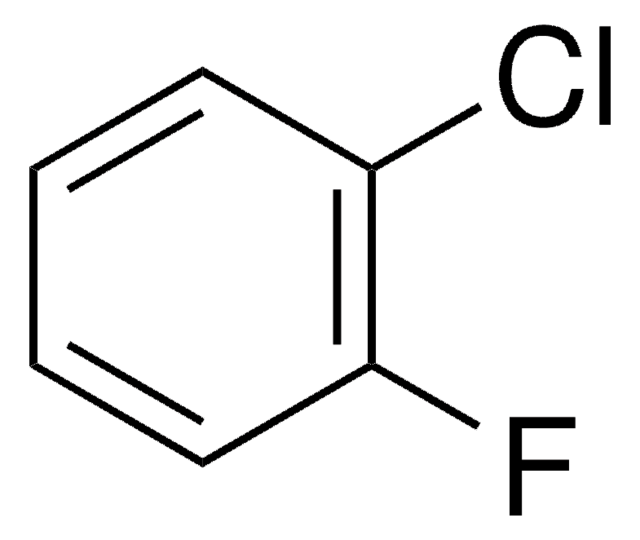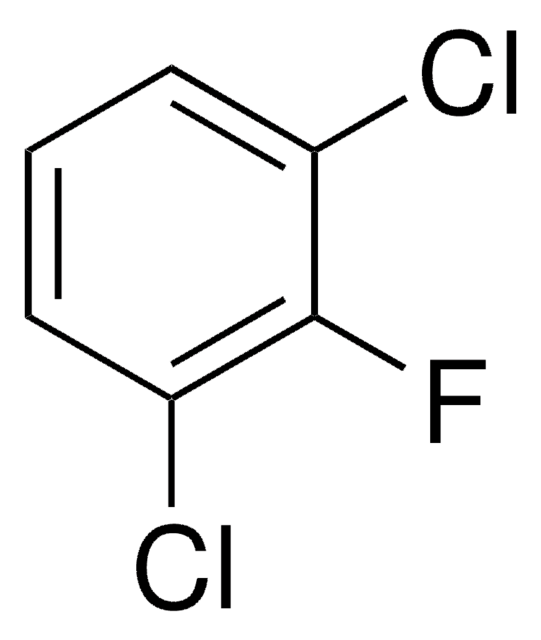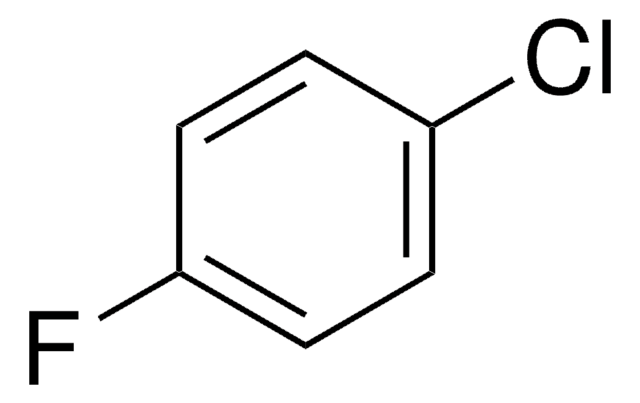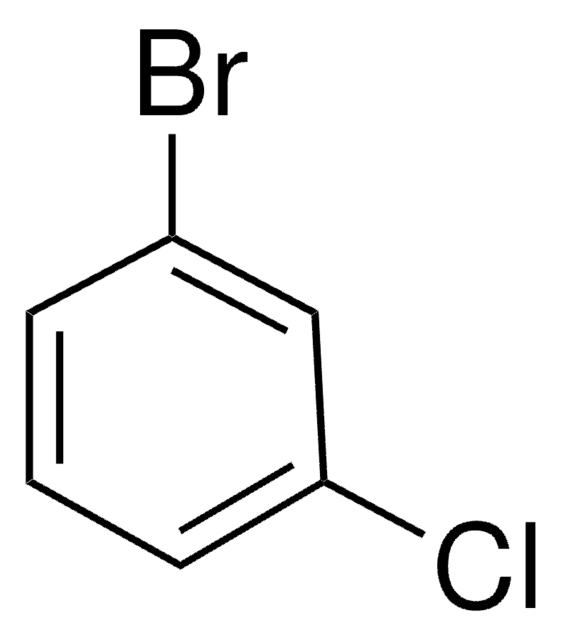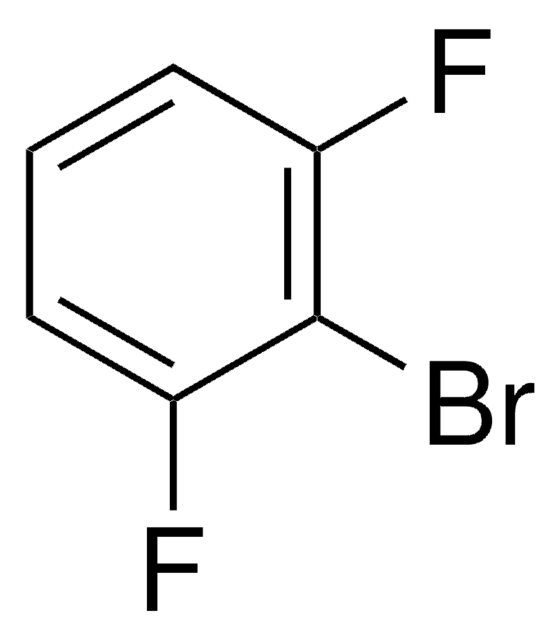About This Item
Recommended Products
Quality Level
Assay
99%
form
liquid
refractive index
n20/D 1.494 (lit.)
bp
126-128 °C (lit.)
density
1.219 g/mL at 25 °C (lit.)
functional group
chloro
fluoro
SMILES string
Fc1cccc(Cl)c1
InChI
1S/C6H4ClF/c7-5-2-1-3-6(8)4-5/h1-4H
InChI key
VZHJIJZEOCBKRA-UHFFFAOYSA-N
Looking for similar products? Visit Product Comparison Guide
General description
Signal Word
Danger
Hazard Statements
Precautionary Statements
Hazard Classifications
Eye Irrit. 2 - Flam. Liq. 2 - Skin Irrit. 2 - STOT SE 3
Target Organs
Respiratory system
Storage Class Code
3 - Flammable liquids
WGK
WGK 3
Flash Point(F)
68.0 °F - closed cup
Flash Point(C)
20 °C - closed cup
Personal Protective Equipment
Regulatory Listings
Regulatory Listings are mainly provided for chemical products. Only limited information can be provided here for non-chemical products. No entry means none of the components are listed. It is the user’s obligation to ensure the safe and legal use of the product.
FSL
Group 4: Flammable liquids
Type 1 petroleums
Hazardous rank II
Water insoluble liquid
JAN Code
162299-5G:
162299-VAR:
162299-25G:
162299-100G:
162299-BULK:
Choose from one of the most recent versions:
Already Own This Product?
Find documentation for the products that you have recently purchased in the Document Library.
Global Trade Item Number
| SKU | GTIN |
|---|---|
| 162299-100G | |
| 162299-25G | 4061837071003 |
| 162299-5G | 4061837071010 |
Our team of scientists has experience in all areas of research including Life Science, Material Science, Chemical Synthesis, Chromatography, Analytical and many others.
Contact Technical Service
